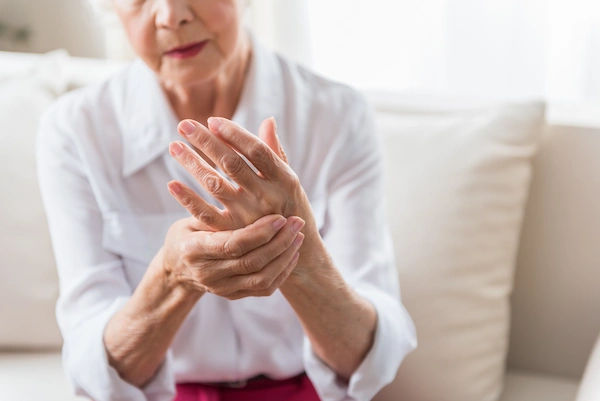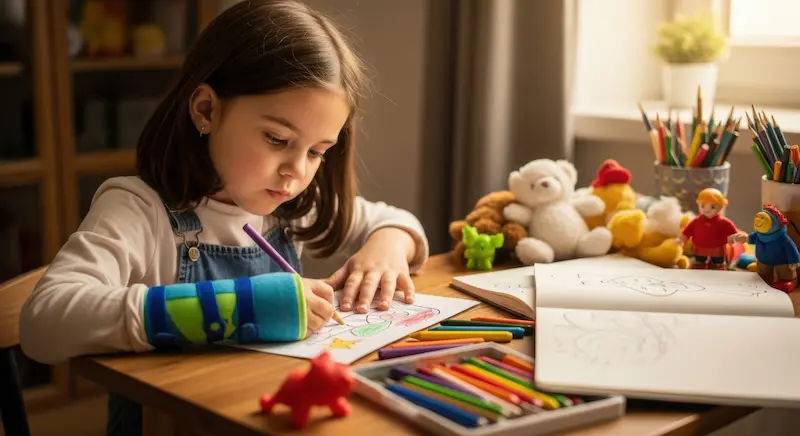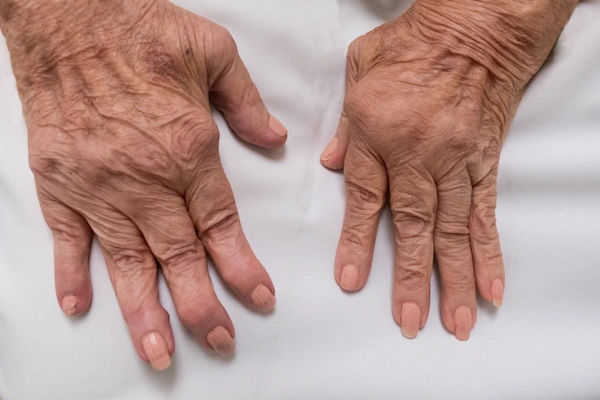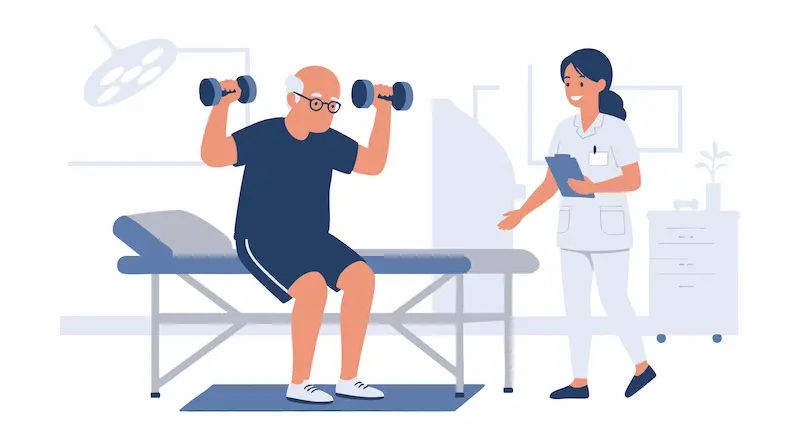Juvenile Idiopathic Arthritis: A Parent's Guide to Symptoms & Care
Discover the symptoms, diagnosis, and treatment of Juvenile Idiopathic Arthritis (JIA) in children. A practical guide for parents to support and care for their child.

Written by Dr. J T Hema Pratima
Reviewed by Dr. Dhankecha Mayank Dineshbhai MBBS
Last updated on 6th Oct, 2025
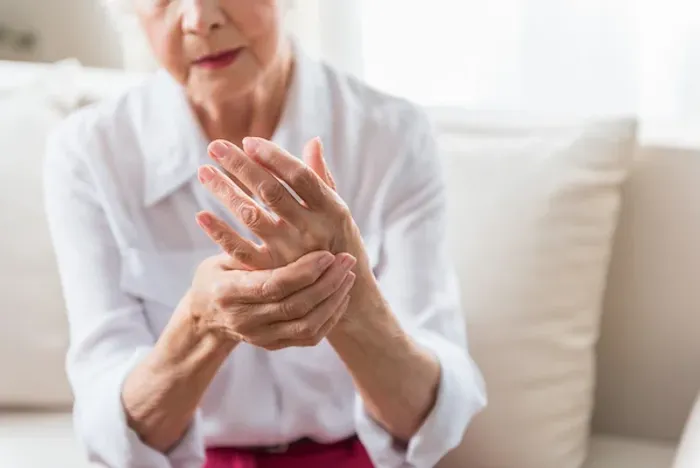
Introduction
Watching your child struggle with persistent pain can be a heart-wrenching experience. When that pain is in their joints and lasts for weeks, it’s natural to worry. Could it be juvenile idiopathic arthritis (JIA)? Often misunderstood as an "old person's disease," arthritis is, in fact, a leading cause of disability in children. JIA is an umbrella term for several types of chronic arthritis that affect children under the age of 16. This guide is designed to demystify JIA for parents and caregivers. We will walk you through what JIA is, how to recognise its signs, the diagnostic process, and the modern treatment strategies that allow children to lead active, fulfilling lives. Understanding this condition is the first step toward effective management and empowering your child to thrive.
What is Juvenile Idiopathic Arthritis (JIA)?
Juvenile Idiopathic Arthritis is not a single disease but an autoimmune condition where the body’s immune system mistakenly attacks its own healthy tissues, primarily targeting the joints. This leads to inflammation, which causes pain, swelling, warmth, and stiffness. The term "idiopathic" simply means "of unknown cause." While researchers believe a combination of genetic and environmental factors triggers the autoimmune response, no single specific cause has been identified.
Idiopathic Meaning: Why the Cause is Unknown
The "idiopathic" label can be frustrating for parents seeking answers. It’s important to understand that it doesn’t mean nothing is known about the condition. Instead, it signifies that JIA is a diagnosis of exclusion. Doctors arrive at it after ruling out other potential causes of joint inflammation, such as infections, injuries, or other autoimmune diseases. Research is ongoing to pinpoint specific triggers.
JIA vs. Adult Rheumatoid Arthritis: Key Differences
While similar in name, JIA is distinct from adult rheumatoid arthritis (RA). The most obvious difference is the age of onset—JIA begins before age 16. Furthermore, children with juvenile idiopathic arthritis often experience different symptoms, including growth problems. Some types of JIA, like oligoarticular JIA, are specific to childhood and can go into permanent remission, which is less common in adult RA. The treatment approaches also differ, with a stronger emphasis in JIA on preserving physical development and function.
Recognising the Signs: Common JIA Symptoms
Symptoms of JIA can be subtle and may come and go, making them easy to dismiss as "growing pains" or a minor injury. However, persistence is key. Symptoms must be present for at least six weeks for a JIA diagnosis.
Health topic carousel:
Doctor's speciality: Rheumatology
Text: Consult a Rheumatologist for the best advice
Joint-Related Symptoms (Pain, Swelling, Stiffness)
The hallmark symptoms are joint-related. You might notice your child:
Limping, especially in the morning or after a nap.
Clumsiness or reluctance to use an arm or leg.
Swelling or redness in one or more joints. The knees, hands, and feet are commonly affected.
Morning stiffness that takes time to "wear off."
Whole-Body Symptoms (Fever, Rash, Fatigue)
JIA can affect the entire body, particularly in systemic-onset JIA. Look for:
High, spiking fevers that typically occur in the evenings and disappear by morning.
A light pink rash that may come and go with the fever.
Persistent fatigue and irritability beyond what is typical for a child.
Swollen lymph nodes.
When to See a Doctor: Red Flags for Parents
If your child’s joint pain or swelling lasts for more than a week or two, interferes with their normal activities, or is accompanied by fever and rash, it’s time to seek medical advice. If symptoms persist beyond two weeks, consult a doctor online with Apollo24|7 for further evaluation. Early diagnosis is critical for preventing long-term joint damage.
The Different Types of Juvenile Idiopathic Arthritis
JIA is classified into several types based on the number of joints affected and the symptoms present during the first six months. This classification helps guide juvenile idiopathic arthritis treatment options.
Oligoarticular JIA (Affecting Few Joints)
This is the most common type, affecting four or fewer joints, typically large ones like the knees or ankles. A major concern with this type is the risk of an eye inflammation called uveitis, which requires regular screening by an ophthalmologist.
Polyarticular JIA (Affecting Many Joints)
This type affects five or more joints, often on both sides of the body (e.g., both knees, both wrists). It can resemble adult rheumatoid arthritis. It is further divided based on the presence of a factor in the blood called rheumatoid factor (RF).
Systemic-Onset JIA (Affecting the Entire Body)
This type involves joint inflammation along with prominent systemic symptoms like high fevers and a rash. It can also affect internal organs like the heart and lungs.
Enthesitis-Related JIA, Psoriatic JIA, and Undifferentiated
Enthesitis-Related JIA involves inflammation where tendons and ligaments attach to bone (entheses), often in the spine, hips, and heels.
Psoriatic JIA is associated with the skin condition psoriasis or specific nail changes.
Undifferentiated JIA is diagnosed when symptoms don’t fit neatly into any other category.
How is JIA Diagnosed? The Diagnostic Journey
There is no single test for JIA. Diagnosis is a process that involves a careful evaluation by a specialist.
The Role of the Paediatric Rheumatologist
A paediatric rheumatologist is a doctor specially trained to diagnose and treat autoimmune conditions like JIA in children. They will take a detailed medical history and perform a thorough physical exam to assess joint swelling, pain, and range of motion.
Blood Tests and What They Look For
Blood tests help support the diagnosis and rule out other conditions. They may look for:
Inflammatory markers: Erythrocyte Sedimentation Rate (ESR) and C-Reactive Protein (CRP) indicate inflammation in the body.
Antinuclear Antibody (ANA): A positive ANA test is associated with an increased risk of uveitis.
Rheumatoid Factor (RF): Helps classify polyarticular JIA.
Apollo24|7 offers convenient home collection for tests like these, making the diagnostic process easier for families.
Imaging Scans: X-rays, Ultrasounds, and MRIs
Imaging helps visualise the joints. X-rays can show bone damage or changes over time, while ultrasound and MRI are more sensitive for detecting active inflammation in the joints and soft tissues early on.
JIA Treatment Goals and Options
The goal of modern JIA treatment is not just to reduce pain but to achieve clinical remission—a state with no signs or symptoms of active disease. This approach helps prevent joint damage and preserve normal growth and function.
The Primary Goal: Remission and Protecting Joints
Aggressive early treatment is the standard of care. The focus is on suppressing inflammation as quickly as possible to put the disease into remission, allowing the child to develop normally.
Common Medications for Juvenile Arthritis
A step-wise approach is used, often starting with milder medications and progressing to stronger ones if needed.
NSAIDs and Pain Relief: Nonsteroidal anti-inflammatory drugs (e.g., ibuprofen) help reduce pain and inflammation but do not alter the disease course.
DMARDs like Methotrexate: Disease-Modifying Antirheumatic Drugs (DMARDs) are the cornerstone of treatment. Methotrexate is the most common and works to suppress the overactive immune system.
Biologic Response Modifiers: These are newer, targeted drugs (e.g., etanercept, adalimumab) used when DMARDs are not effective. They block specific molecules involved in the inflammatory process.
The Critical Role of Physical and Occupational Therapy
Therapists are essential team members. Physical therapy helps maintain muscle strength and joint flexibility, while occupational therapy provides strategies and tools for performing daily activities with less pain.
Potential Complications and Long-Term Management
With proper treatment, most children with JIA lead normal lives. However, vigilant management is needed to address potential complications.
Eye Inflammation (Uveitis): The Silent Complication
This is a serious concern, especially in oligoarticular JIA. Uveitis often has no symptoms (it's "silent") but can cause permanent vision loss if untreated. Therefore, children, particularly those who are ANA-positive, need regular eye exams by a specialist.
Managing Growth and Bone Development Issues
Chronic inflammation can interfere with a child’s growth. Some joints may grow too fast or too slow, leading to length discrepancies. Medications like corticosteroids can also affect bone density. A healthy diet rich in calcium and vitamin D, along with weight-bearing exercise, is crucial.
Living a Full Life with JIA: A Family Affair
A JIA diagnosis affects the whole family. A positive, proactive approach is key to successful long-term management of juvenile idiopathic arthritis.
Navigating School and Social Activities
Open communication with your child’s school is vital. A 504 plan can outline accommodations, such as extra time for moving between classes or permission to take medication at school. Encouraging participation in social activities and sports that are joint-friendly (like swimming) is important for mental and physical health.
Diet, Exercise, and Mental Wellbeing
While no specific diet cures JIA, an anti-inflammatory diet (rich in fruits, vegetables, and omega-3s) can support overall health. Regular, low-impact exercise is non-negotiable for joint health. Finally, don’t neglect mental health. Counselling or support groups can help children and parents cope with the emotional challenges of a chronic illness.
Conclusion
Receiving a diagnosis of juvenile idiopathic arthritis for your child can feel overwhelming, but it’s important to remember that it is a manageable condition. The landscape of treatment for childhood arthritis has advanced dramatically. Today, the primary goal is complete remission, allowing your child to run, play, and grow without limitations. This journey requires a partnership between your family, a dedicated paediatric rheumatologist, and a supportive care team. By staying informed, advocating for your child, and adhering to the treatment plan, you can empower your child to not just live with JIA, but to thrive. If your child's condition does not improve after trying initial methods, or if you suspect JIA, book a physical visit to a doctor with Apollo24|7 to start the diagnostic process. Knowledge, vigilance, and proactive care are the most powerful tools you have.
Frequently Asked Questions (FAQs) About JIA
1. Will my child outgrow juvenile idiopathic arthritis?
While some children, particularly those with oligoarticular JIA, may experience permanent remission, JIA is a chronic condition. The goal of treatment is to induce remission, where the disease is inactive, allowing the child to function normally. Many children can discontinue medication after a long period of remission.
2. What are the best exercises for a child with JIA?
Low-impact activities that maintain range of motion and strengthen muscles without stressing the joints are ideal. Swimming and cycling are excellent choices. A physical therapist can create a personalised exercise programme tailored to your child's specific needs.
3. Is juvenile idiopathic arthritis hereditary?
While there is a genetic predisposition, meaning having a family member with an autoimmune disease can slightly increase the risk, JIA is not directly inherited like some conditions. It is believed to be triggered by a combination of genetic factors and environmental exposures.
4. What is the long-term prognosis for a child with JIA?
The outlook is better than ever. With early and aggressive treatment, the vast majority of children with JIA achieve good functional outcomes, attend school, participate in activities, and lead productive adult lives. The focus is on minimising long-term joint damage.
5. How can I help my child cope with the pain and fatigue of JIA?
Open communication, validating their feelings, and maintaining a normal routine are crucial. Ensure they get adequate rest, use heat packs for morning stiffness, and encourage them to pace their activities. Involving them in their own care as they age also fosters a sense of control.
Health topic carousel:
Doctor's speciality: Rheumatology
Text: Consult a Rheumatologist for the best advice
Consult Top Specialists for Personalised Tips

Dr. Anand Ravi
General Physician
2 Years • MBBS
Bengaluru
PRESTIGE SHANTHINIKETAN - SOCIETY CLINIC, Bengaluru

Dr. Zulkarnain
General Physician
2 Years • MBBS, PGDM, FFM
Bengaluru
PRESTIGE SHANTHINIKETAN - SOCIETY CLINIC, Bengaluru
Dr Ankit Patowari
Rheumatologist
6 Years • MBBS, MD MEDICINE, DM RHEUMATOLOGY
Guwahati
Apollo Clinic Guwahati, Assam, Guwahati

Dr. Brig K Shanmuganandan
Rheumatologist
20 Years • MBBS, MD (Med.), DNB (Med.), Fellow (Rheuma.)
Chennai
Apollo Hospitals Greams Road, Chennai
(475+ Patients)

Dr. Kaushik V V
Rheumatologist
17 Years • MBBS, MRCP, CCT (GIM), CCT (Rheumatolgy), FRCP
Chennai
Apollo Hospitals Greams Road, Chennai
(125+ Patients)
Consult Top Specialists

Dr. Anand Ravi
General Physician
2 Years • MBBS
Bengaluru
PRESTIGE SHANTHINIKETAN - SOCIETY CLINIC, Bengaluru

Dr. Zulkarnain
General Physician
2 Years • MBBS, PGDM, FFM
Bengaluru
PRESTIGE SHANTHINIKETAN - SOCIETY CLINIC, Bengaluru
Dr Ankit Patowari
Rheumatologist
6 Years • MBBS, MD MEDICINE, DM RHEUMATOLOGY
Guwahati
Apollo Clinic Guwahati, Assam, Guwahati

Dr. Brig K Shanmuganandan
Rheumatologist
20 Years • MBBS, MD (Med.), DNB (Med.), Fellow (Rheuma.)
Chennai
Apollo Hospitals Greams Road, Chennai
(475+ Patients)

Dr. Kaushik V V
Rheumatologist
17 Years • MBBS, MRCP, CCT (GIM), CCT (Rheumatolgy), FRCP
Chennai
Apollo Hospitals Greams Road, Chennai
(125+ Patients)
